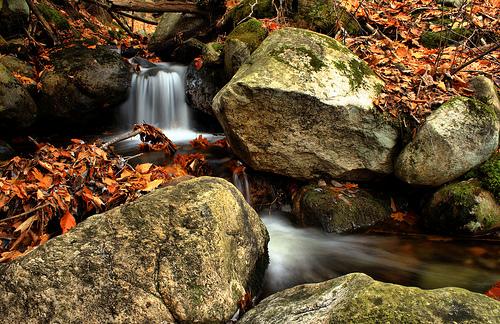
Just because you can’t see it doesn’t mean it’s not there. Such is the case with temporary waters—defined as waterways that do not have visible connections to downstream or nearby surface waters throughout the year.
A new article published today in Science highlights the latest scientific evidence on the importance of temporary waterways and calls on policy makers to strengthen their protection and management. Lead author Vicenç Acuña, researcher at the Catalan Institute for Water Research in Spain, and corresponding author Margaret Palmer, Executive Director of the National Socio-Environmental Synthesis Center (SESYNC) and University of Maryland Professor of Entomology, developed much of the article with the other co-authors while Acuña was a visiting researcher at SESYNC.
They occur world-wide, yet temporary waterways are not currently included within the legal frameworks of many countries—therefore lacking protection against human activities that alter or even eliminate them. This legislative exclusion is problematic, the article authors note, because it opens the door for unchecked development activities that degrade not only temporary waterways, but also the larger water networks of which they are a part.
The implications threaten both ecological health and human well-being.
“Temporary waters are not well protected by law or management policies, yet their loss or degradation can result in pollution of downstream waters that poses risks to humans and the ecosystems they depend on,” says Palmer. “And they are currently at high risk of being filled and built upon because regulations and policies aren’t based on current science.”
These waterways are critical to water supply in river networks, they support a unique biodiversity integral to the food chains of many other organisms, and they provide temporary habitat for many common migrating species. Because they are commonly located at river network headwaters, they are essential for the transport of carbon and nitrogen to other, permanent sections of those river networks. And, perhaps most importantly to many policy makers, they directly impact human well-being due to their connection with sources of water for people, livestock, and agriculture alike.
“The degradation of temporary waters is significant because it is cumulative,” says Andrew Elmore, Associate Professor at the University of Maryland Center for Environmental Science’s Appalachian Laboratory. “These waterways are all over the landscape. If we’re developing in a watershed and we fill stream after stream after stream, pretty soon, there are none left.”
Part of the scientific challenge to management of these waterways—due in large part to their variability—is to first determine where they are. The authors call upon researchers for improved mapping of temporary waterways, a niche Elmore is currently working to fill.
“We noticed that we didn’t have the ability to manage these waterways comprehensively, even if we had the social and political will to do it, because we didn’t have the necessary maps,” Elmore says. “So we spent a lot of time developing techniques, using digital elevation models, for mapping streams.
“Once you know where these streams should be, you can compare the maps to the current landscape to determine how many of these temporary waterways have been affected by development.”
In major cities, more than 70 percent of small, primarily temporary streams are buried. We risk the same fate in developing areas, Elmore warns, if we don’t have the necessary policies in place to protect them.
“This article summarizes current knowledge on temporary waterways, including their value—in other words, why policy makers should care,” says Acuña. “And we’re urging policy makers, federal regulators, resource managers, and conservation lobbyists to consider their inclusion within legislative frameworks to avoid further degradation of these ecosystems.”
The National Socio-Environmental Synthesis Center—funded through a National Science Foundation grant to the University of Maryland—is an Annapolis, MD-based research center dedicated to solving complex problems at the intersection of human and natural systems. Visit www.sesync.org for more information.
Press Contact:
Melissa Andreychek, SESYNC
(410) 919-4990
mandreychek@sesync.org
Above photo: Just Us 3, Flickr/Creative Commons